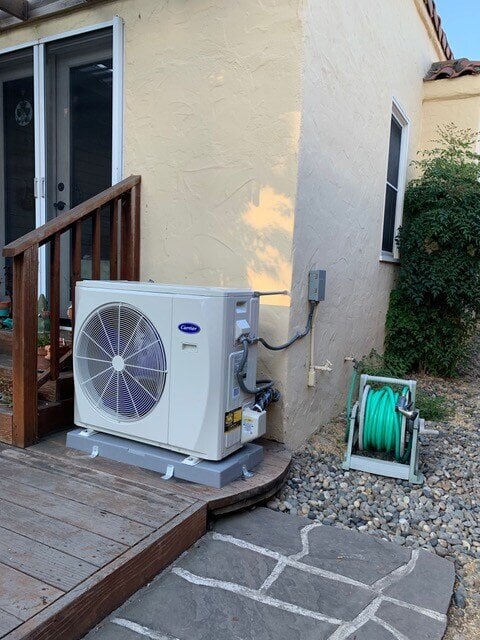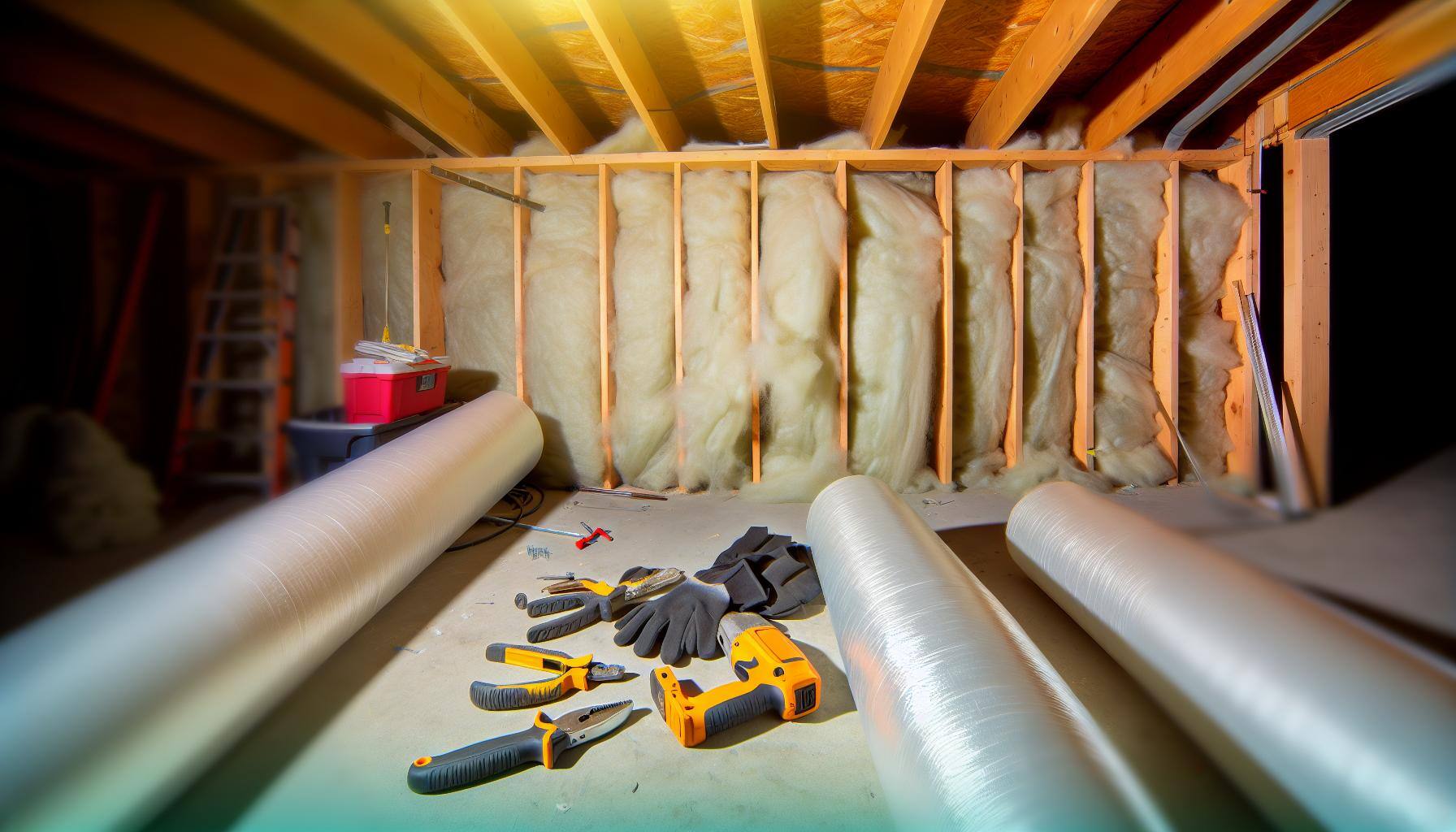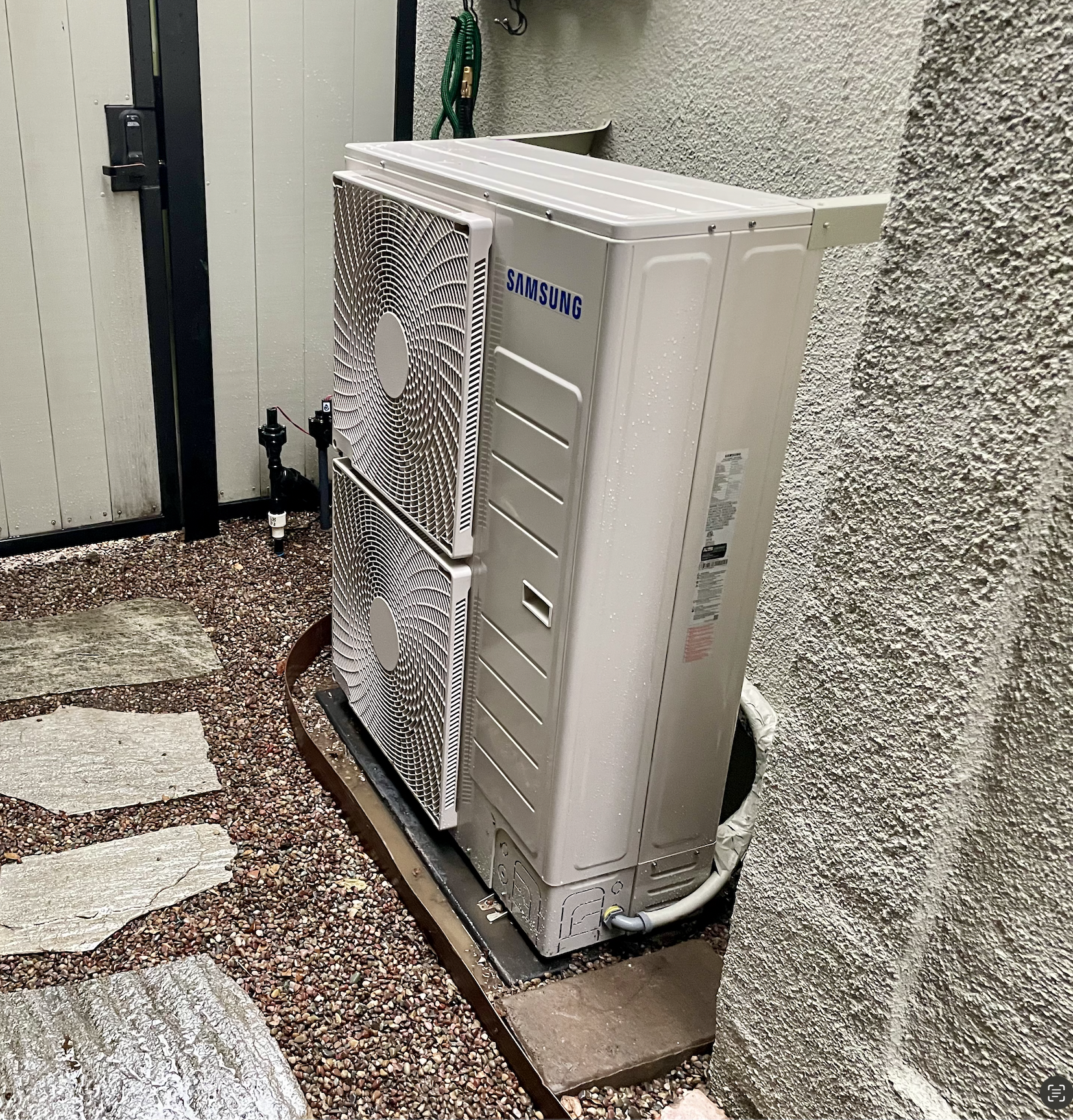A Step-by-Step Guide to Cleaning AC Coils
Updated August 15, 2024
One day, you may wake up to find your AC isn’t working as well as it should. Maybe it's struggling to keep your room cool or not blowing cold air at all. If you have a problem, one possible issue is dirty condenser coils. You’re probably wondering if you can clean your AC coils by yourself.
The answer is yes! Cleaning your air conditioner coils is a fairly simple and inexpensive project that you can do yourself, but it’s important to do it carefully so that you don’t damage your AC unit.
You can also have your air conditioning coils cleaned as part of an annual maintenance visit from your HVAC contractor, which typically costs around $250-300 and includes thorough cleaning and inspection.
In this article, we’ll walk you through how to clean your AC coils, as well as go over some next steps to take if cleaning your AC unit doesn't improve the situation.
Why should you trust us?
Here at QuitCarbon, our expert planners have helped thousands of homeowners evaluate the best heat pump water heater options for their homes.
We provide free ENERGY STAR® certified guidance along with vetted local contractors to upgrade your home with heat pumps, induction cooking, EV chargers, solar, batteries, and more.
QuitCarbon has won prizes from the US Department of Energy and we collaborate with the Pacific Northwest National Laboratories and the National Renewable Energy Laboratory (NREL) to improve the accuracy of our content.
- Why Cleaning AC Coils Is Important
- Tools Needed for Clean Your AC Coils
- How to Clean Condenser Coils
- What to Do if You AC Still Has Performance Issues
Why Cleaning AC Coils Is Important
The last thing you want is for your air conditioner to stop working when it's hot outside. In extreme heat, a broken AC can be downright dangerous. Cleaning your condenser coils is essential for keeping your AC functioning and running efficiently.

A very dirty AC coil, via Reddit
How AC Coils Work
Air conditioners cool your home by removing indoor heat and releasing it outside. The process begins as warm air is pulled from your home through a return duct. This air passes over evaporator coils containing refrigerant, which absorbs the heat. The cooled air is then blown back into your home via supply ducts. Meanwhile, the heated refrigerant moves to outdoor condenser coils, where it releases the absorbed heat outside.
Dirty evaporator coils can't effectively absorb heat and humidity, while dirty condenser coils struggle to release heat outdoors. As dirt accumulates, your AC unit must work harder to cool your home.
Problems from Dirty AC Coils
- Your AC unit will likely use more energy to perform at the same level, which can lead to higher energy bills.
- Your AC fan will run all of the time.
- The AC may not cool your house efficiently.
- Dirty coils can eventually lead to frozen coils and a complete AC breakdown, and a costly repair or replacement.
In short, it’s important to keep your condenser and evaporator coils clean so that your air conditioner can do its job properly. Otherwise, you could end up needing to repair or replace your AC unit, which isn't cheap. You should clean your AC unit at least once a year.
Tools Needed to Clean Your AC Coils
If you're wondering how to clean dirty AC coils, we've got you covered. Cleaning your air conditioning unit is an important part of maintaining your home's energy efficiency, and doing it right requires the correct tools and materials.
AC coils are delicate and sharp - so don't touch them!
So before you start, make sure you have everything you need:
- Gloves
- Flashlight
- A screwdriver or drill
- Scrub brush
- Hose with a sprayer attachment
- Shop vacuum with wand extension attachment
- Fin comb (an inexpensive specialized brush you may need to order in advance)
- Soap
- Coil cleaner for AC
Selecting the right cleaning solution for your AC coils is crucial. You have two main options:
The recommended method is to use a commercial foaming AC cleaning agent, available at hardware stores. These products are specifically formulated for AC coils. Look for "AC foaming cleaner" and purchase a few cans to ensure you have enough.
Alternatively, you can create a homemade cleaner using a mixture of white vinegar, detergent, and water. However, be cautious with this DIY approach, as there's no guarantee it won't damage your unit. Commercial cleaners are safer and more reliable for maintaining your AC system.
How to Clean Condenser Coils
Now it's time to learn how to clean your condenser coils. Before you start, turn off the power to your unit and disable the breaker to keep yourself and your AC unit safe. Then follow these steps:
Cleaning Outdoor Condenser Coils
- Take off the covers on the top and side of the condenser unit by locating and removing the screws or bolts that hold them in place. Set aside the screws and bolts in a container so you don’t lose them.
- Remove the fan from the unit using a screwdriver or cordless drill. (If there are no screws holding it in place or the task looks too involved, skip this step.)
- Clean up any debris around or in the unit, using gloves to remove leaves, sticks, or other bits of debris.
- Use a shop vacuum to remove any remaining dust or dirt from the unit.
- If the aluminum fins on the condenser coils are bent, use a fin comb to gently straighten them out. This can help the unit run better.
- Spray down the coils with coil cleaner, using your hose to gently wet the coils down first.
- Use a scrub brush to apply soap to the coils. This is where you use a foam cleaner if you purchased one or your DIY cleaner if you made one.
- Wait a few minutes for the soap to work, then rinse the coils with your hose, being careful not to use too much water pressure.
- Put the AC unit back together by replacing the fan and the covers, making sure you use the screws or bolts to hold them in place.
- Turn the power to your AC unit back on, and you're done!

The cleaned coil from earlier in this post. Much better!
Cleaning your outdoor AC unit is an important part of regular maintenance, but it's not the only thing you need to do to keep your AC system running smoothly. Your indoor units also need attention, specifically the evaporator coils.
Cleaning Indoor Evaporator Coils
- Locate your indoor AC unit and turn off its power.
- Remove the access panel to reveal the evaporator coils inside the air handler. These A-shaped coils are typically large, flat tubes. Store any screws safely and consider taking reference photos.
- Use a nylon scrub brush to gently remove large dirt particles from the coils, working top to bottom.
- Use a fin brush to straighten any flattened coils.
- Apply foaming cleaner to the coils and let it sit for 5-10 minutes. Follow the instructions on the can for best results.
- Lightly brush any remaining dirt or debris with a brush or gloved hand.
- Rinse the coils with water from a spray bottle. Avoid hosing down the indoor unit, as this could damage the unit and create an unpleasant odor.
- Dry the coils as much as possible with a soft towel or allow them to air dry.
- Reattach the access panel and turn on the AC unit.
What to Do If Your AC Still Has Performance Issues
Cleaning the evaporator coils can help improve the performance of your air conditioning system. However, if your AC still doesn't run well, it may be time for more serious repairs or even a new unit altogether. Coil replacements can be expensive ($600-$2,000), so consider the cost of repairs and maintenance on an aging unit before investing in a replacement.
If you're considering replacing your AC, you should consider upgrading to a heat pump which provides efficient air conditioning in summer and heating in winter.
Learn more in our ultimate guide to heat pumps!

An outdoor heat pump unit provides AC in summer and heating in winter.
It's also possible that the problem isn't with the coils at all. Other issues that can affect your AC performance include dirty air filters, incorrect sizing, a clogged condenser, low refrigerant levels, or a broken compressor. If your home hasn't been professionally air-sealed or insulated, a loss of efficiency could be contributing to your issues.
The video below from ENERGY STAR® has some great ideas to help you stay cool and lower your utility bills.
Need professional help with your AC? Contact QuitCarbon. Our ENERGY STAR certified experts can guide you through the best steps for your AC, insulation, and other home efficiency projects.
Join thousands of homeowners who've boosted their home's energy efficiency with QuitCarbon's assistance.




